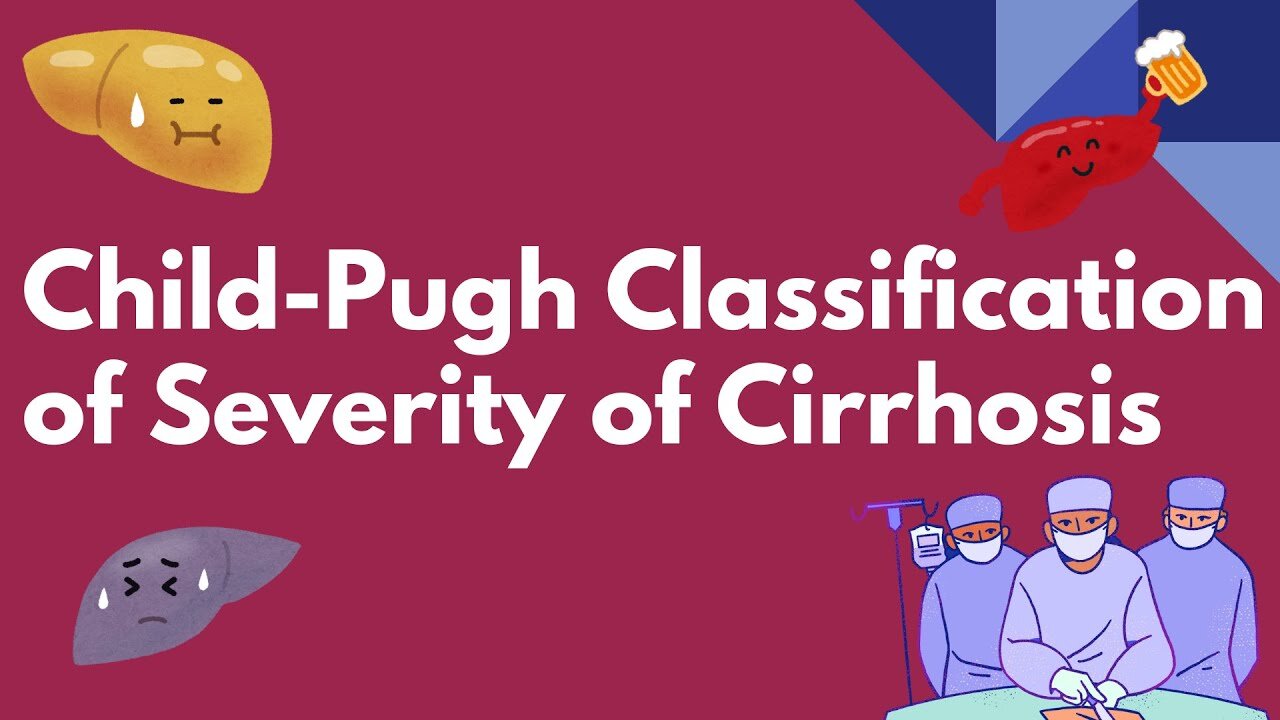Premium Only Content

Child Classification of Liver Disease | Child-Pugh Score Explained | Novice Medic
In this video, we break down the Child Classification of Liver Disease, also known as the Child-Pugh score, which is used to assess the severity and prognosis of liver cirrhosis. We will explain how the Child-Pugh score evaluates liver function based on five clinical parameters: bilirubin levels, albumin levels, prothrombin time, ascites, and encephalopathy. Learn how these factors come together to categorize liver disease into Child A, B, or C and determine the appropriate treatment and management strategies. Whether you're studying hepatology or general medicine, this video offers a clear, concise overview!
Tags:
Child classification of liver disease, Child-Pugh score, liver cirrhosis, liver disease severity, liver function test, bilirubin, albumin, ascites, encephalopathy, prothrombin time, Child A B C classification, liver prognosis, liver failure, hepatology, liver disease management, Novice Medic, liver health
Community Post:
🚨 Understanding the Child-Pugh Score for Liver Disease 🚨
Fellow Medics, today we’ll break down the Child Classification of Liver Disease, or Child-Pugh score. This score helps us assess liver function and its prognosis in cirrhosis patients. By evaluating parameters like bilirubin, albumin, ascites, and encephalopathy, we can classify liver disease into Child A, B, or C. Don't miss this essential lecture for anyone studying liver health or hepatology! #LiverDisease #ChildPughScore #Hepatology #NoviceMedic
-
 1:00:27
1:00:27
Trumpet Daily
18 hours ago $3.91 earnedCongress Humiliates Itself - Trumpet Daily | Jan. 15, 2025
9.31K13 -
 1:49:46
1:49:46
Glenn Greenwald
1 day agoTrump Fosters A Peace Deal With Israel & Gaza; Trump's Pressure On Israel Embarrasses His Enemies & Provides Foreign Policy Clues; Rubio & Hegseth On War And Militarism | SYSTEM UPDATE #389
112K178 -
 1:28:46
1:28:46
Donald Trump Jr.
18 hours agoOut of this World: Breaking News Investigation on Secret Alien Aircrafts, Live with Ross Coulthart & Lue Elizondo | TRIGGERED Ep.207
322K462 -
 1:39:31
1:39:31
Space Ice
14 hours agoSpace Ice & Redeye: Battlefield Earth & Rob Schneider
81.1K6 -
 1:33:38
1:33:38
Flyover Conservatives
1 day agoAMANDA GRACE | Prophetic Warnings Ignored: What Happens When Leaders Defy God | FOC Show
67.2K25 -
 59:57
59:57
The StoneZONE with Roger Stone
13 hours agoMEDICAL MURDER: A Sneak Peak into the Making of Died Suddenly 2 | The StoneZONE w/ Roger Stone
55.2K11 -
 1:07:03
1:07:03
Tucker Carlson
12 hours agoMother of Likely Murdered OpenAI Whistleblower Reveals All, Calls for Investigation of Sam Altman
155K182 -
 55:44
55:44
LFA TV
19 hours agoCongress Humiliates Itself | TRUMPET DAILY 1.15.25 7pm
153K55 -
 1:42:04
1:42:04
2 MIKES LIVE
14 hours ago2 MIKES LIVE #167 News Breakdown Wednesday!
96.4K15 -
 2:12:19
2:12:19
Quite Frankly
17 hours ago"Fahrenheit 2025: Drone Hysteria, The Fog, Smart L.A." ft. Elana Freeland 1/15/25
102K25